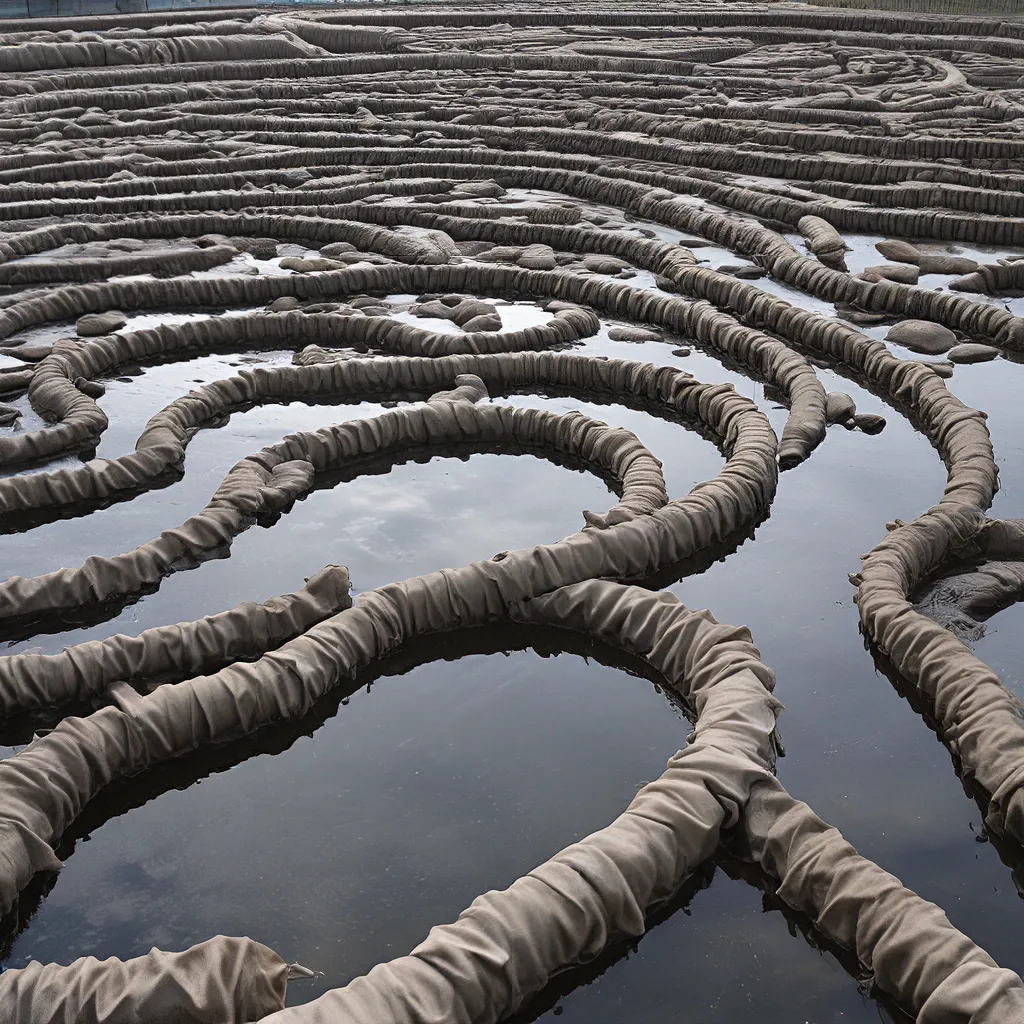
As someone with a deep fascination for the intersection of environmental sustainability and cutting-edge technology, I’ve been keeping a close eye on the rapidly evolving landscape of the circular textile industry. And let me tell you, the role of wastewater treatment in this dynamic ecosystem is nothing short of captivating.
You see, the textile industry has long been a major contributor to the global waste crisis, with textile production and disposal accounting for a staggering 20% of worldwide wastewater. But just when it seemed like a never-ending uphill battle, a glimmer of hope emerged – the concept of a circular economy.
Imagine a world where the very materials that once posed a threat to our environment are instead transformed into valuable resources, powering a new era of sustainable innovation. That’s the promise of the circular textile industry, and wastewater treatment is playing a pivotal part in making it a reality.
The Circular Textile Conundrum
Let’s dive a little deeper into the challenges facing the textile industry. Conventional textile production is a linear process – raw materials are extracted, transformed into fabrics, and then discarded after use. This ‘take-make-waste’ model has led to a growing mountain of textile waste, much of which ends up in landfills or our precious waterways.
But the circular textile industry is flipping this script on its head. The goal is to create a closed-loop system where textile waste is minimized, and the resources used in production are continually reused and repurposed. This not only reduces the environmental impact but also unlocks new business opportunities and drives innovation.
One of the critical components of this circular model is wastewater treatment. The textile industry is a notorious water guzzler, consuming vast amounts of water during various stages of production, from dyeing and finishing to washing and cleaning. And as you can imagine, this wastewater is often laden with harmful chemicals, dyes, and other contaminants.
According to recent research, textile wastewater accounts for about 20% of global industrial wastewater discharge, making it a significant contributor to water pollution. And with the rapid growth of the textile industry, particularly in developing countries, this problem is only set to intensify.
Wastewater Treatment to the Rescue
This is where wastewater treatment comes into play as a hero in the circular textile story. By implementing advanced wastewater treatment technologies, textile manufacturers can not only minimize their environmental impact but also recover valuable resources from the waste stream.
Emerging research suggests that innovative wastewater treatment processes can enable the recovery of water, chemicals, and even textiles themselves from the waste stream. This means that instead of simply disposing of dirty water, textile companies can recycle and reuse these resources, creating a more sustainable and efficient production cycle.
One fascinating example of this is the use of membrane bioreactor (MBR) technology, which combines biological treatment with membrane filtration to produce high-quality treated water. This treated water can then be reused within the textile production process, reducing the overall water consumption and minimizing the discharge of pollutants.
But the benefits of wastewater treatment don’t stop there. By recovering chemicals and dyes from the wastewater, textile companies can reduce their reliance on virgin raw materials, further reinforcing the circular economy principles. Imagine a world where the same dyes and finishing agents used in your favorite pair of jeans are continually recycled and reused, minimizing waste and preserving precious natural resources.
The Digital Journey of Textile Waste
Now, as exciting as all this sounds, the path to a truly circular textile industry is not without its challenges. One of the key hurdles is the lack of traceability and transparency within the complex global textile supply chains.
A recent study from Turkey highlights the importance of digital technologies in addressing this issue. By implementing blockchain-based traceability systems, textile companies can track the journey of their products and materials from the raw fiber stage all the way to the finished garment.
This digital transformation not only enhances transparency but also enables more effective waste management and resource recovery. Imagine being able to trace the origin of a textile waste stream, understand its chemical composition, and then tailor the wastewater treatment process accordingly. This level of data-driven optimization could be a game-changer for the circular textile industry.
And the possibilities don’t end there. Artificial intelligence (AI) and machine learning are also being leveraged to optimize wastewater treatment processes, identify inefficiencies, and predict potential issues before they arise. By harnessing the power of these technologies, textile companies can navigate the complexities of the circular economy with greater precision and agility.
Embracing the Circular Textile Future
As I reflect on the exciting developments in the circular textile industry, I can’t help but feel a sense of optimism and wonder. The integration of wastewater treatment into this sustainable ecosystem is a testament to the ingenuity and determination of industry leaders and researchers alike.
Companies like Alpha Wastewater are at the forefront of this revolution, offering cutting-edge solutions that enable textile manufacturers to close the loop and transform their waste into valuable resources. By leveraging advanced technologies and fostering a culture of innovation, these pioneers are paving the way for a more sustainable and resilient textile industry.
Of course, the journey ahead is not without its challenges. There will undoubtedly be obstacles to overcome, from regulatory hurdles to infrastructure constraints. But as I’ve learned, the human spirit is resilient, and when we put our minds to solving complex problems, the results can be truly remarkable.
So, if you’re as fascinated by this topic as I am, I encourage you to stay tuned and keep a watchful eye on the circular textile industry. The future is bright, and the innovations we’ll witness in the realm of wastewater treatment are sure to be a game-changer for the textile sector and beyond.